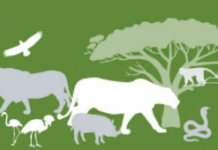- India, known for its rich heritage of biological diversity, has so far documented over 91,200 species of animals and 45,500 species of plants in its ten bio-geographic regions. Besides, it is recognized as one of the eight Vavilovian centres of origin and diversity of crop plants, having more than 300 wild ancestors and close relatives of cultivated plants, which are still evolving under natural conditions. India is also a vast repository of Traditional Knowledge (TK) associated with biological resources.
- India ranks among the top ten species-rich nations and shows high endemism. India has four global biodiversity hot spots (Eastern Himalaya, Indo-Burma, Western Ghats and Sri Lanka, and Sundaland). The varied edaphic, climatic and topographic conditions and years of geological stability have resulted in a wide range of ecosystems and habitats such as forests, grasslands, wetlands, deserts, and coastal and marine ecosystem.
- Inventories of faunal diversity in India are being progressively updated and analyzed with several new discoveries. So far, nearly 91,212 of faunal species (7.43% of the world’s faunal species) have been recorded in the country. Endemic rich Indian fauna is manifested most prominently in Amphibia (61.2%) and Reptilia (47%). Likewise, Indian fish fauna includes two endemic families and 127 monotypic genera. As per the International Union for Conservation of Nature (IUCN) Red List (2008), India has 413 globally threatened faunal species, which is approximately 4.9% of the world’s total number of threatened faunal species.
- Continuous surveys and explorations have added new discoveries – 41 plant species in 2007 by Botanical Survey of India (BSI) alone. The unique features of the plant diversity, among others, include 60 monotypic families and over 6000 endemic species. Recent estimates indicate the presence of over 256 globally threatened plant species in India.
- Likewise, India’s contribution to crop biodiversity has been impressive with repositories of over 50,000 varieties of rice, 5,000 of sorghum, 1,000 varieties of mango, etc. The National Genebank, primarily responsible for ex-situ conservation of unique germplasm on long-term basis, holds 3,66,933 unique accessions of plant genetic resources. India is also endowed with vast and diverse forms of domesticated animal genetic resources, e.g., cattle, buffalo, sheep, goat, pig, camel, horse, donkey, yak, mithun, duck, goose, quail, etc. Besides, a rich diversity of wild relatives of domesticated animals exists here.
- The molecular characterization has been undertaken so far only in a few animals such as cattle,sheep, pig and poultry, using internationally recommended DNA markers. India, endowed with vast inland and marine bioresources, is the third largest producer of fish in the world. A database on 2,182 fishes found in Indian waters has been developed, which includes 327 fresh water species listed in IUCN threat categories and 192 endemic fishes. A macro level fish occurrence map of India has been prepared and DNA barcodes of 100 Indian marine fish species developed.












